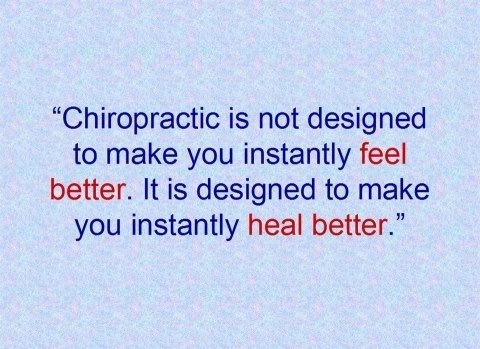Ten Tips for Improving Posture and Ergonomics
Over time, poor posture may be caused by habits from everyday activities such as sitting in office chairs, looking at the computer, driving, standing for long periods of time, or even sleeping. Poor posture can easily become second nature, causing or aggravating episodes of back pain and damaging spinal structures. Fortunately, the main factors affecting posture and ergonomics are completely within one’s ability to control and are not difficult to change.
The following guidelines suggest several ways to improve posture and ergonomics, especially for people who work sitting in an office chair for most of the day.
Know the warning signs of back pain caused by poor ergonomics and posture. Back pain may be the result of poor ergonomics and posture if the back pain is worse at certain times of day or week (such as after a long day of sitting in an office chair in front of a computer, but not during the weekends); pain that starts in the neck and moves downwards into the upper back, lower back and extremities; pain that goes away after switching positions while sitting or standing; sudden back pain that is experienced with a new job, a new office chair, or a new car; and/or back pain that comes and goes for months.
1) Get up and move. As muscles tire, slouching, slumping, and other poor postures become more likely; this in turn puts extra pressure on the neck and back. In order to maintain a relaxed yet supported posture, change positions frequently. One way is to take a break from sitting in an office chair every half hour for two minutes in order to stretch, stand, or walk.
2) Keep the body in alignment while sitting in an office chair and while standing. Distribute body weight evenly to the front, back, and sides of the feet while standing. While sitting in an office chair, take advantage of the chair’s features. Sit up straight and align the ears, shoulders, and hips in one vertical line. Any single position, even a good one, will be tiring. Leaning forward with a straight back can alternate with sitting back, using the back support of the office chair to ease the work of back muscles. Also be aware of and avoid unbalanced postures such as crossing legs unevenly while sitting, leaning to one side, hunching the shoulders forward or tilting the head.
3) Use posture-friendly props and ergonomic office chairs when sitting. Supportive ergonomic “props†can help to take the strain and load off of the spine. Ergonomic office chairs or chairs with an adjustable back support can be used at work. Footrests, portable lumbar back supports, or even a towel or small pillow can be used while sitting in an office chair and while driving. Using purses, bags, and backpacks that are designed to minimize back strain can also influence good posture.
4) Proper corrective eyewear, positioning computer screens to your natural, resting eye position can also help to avoid leaning or straining the neck with the head tilted forward.
5) Increase awareness of posture and ergonomics in everyday settings. Being aware of posture and ergonomics at work, at home, and at play is a vital step towards instilling good posture and ergonomic techniques. This includes making conscious connections between episodes of back pain and specific situations where poor posture or ergonomics may be the root cause of the pain.
6) Use exercise to help prevent injury and promote good posture. Regular exercise such as walking, swimming, or bicycling will help the body stay aerobically conditioned, while specific strengthening exercises will help the muscles surrounding the back to stay strong. These benefits of exercise promote good posture, which will, in turn, further help to condition muscles and prevent injury.
There are also specific exercises that will help maintain good posture. In particular, a balance of trunk strength with back muscles about 30% stronger than abdominal muscles is essential to help support the upper body and maintain good posture.
7) Wear supportive footwear when standing. Avoid regularly wearing high-heeled shoes, which can affect the body’s center of gravity and change the alignment of the entire body, negatively affecting back support and posture. When standing for long periods of time, placing a rubber mat on the floor can improve comfort.
8) Remember good posture and ergonomics when in motion. Walking, lifting heavy materials, holding a telephone, and typing are all moving activities that require attention to ergonomics and posture. It is important to maintain good posture even while moving to avoid injury. Back injuries are especially common while twisting and/or lifting and often occur because of awkward movement and control of the upper body weight alone.
9) Create ergonomic physical environments and workspaces, such as for sitting in an office chair at a computer. It does require a small investment of time to personalize the workspace, home, and car, but the payoff will be well worth it. Undue strain will be placed on the structures of the spine unless the office chair, desk, keyboard, and computer screen, etc. are correctly positioned.
10) Avoid overprotecting posture. Remember that it is important to maintain an overall relaxed posture to avoid restricting movements by clenching muscles and adopting an unnatural, stiff posture. For individuals who already have some back pain, it is a natural tendency to try to limit movements to avoid the potential pain associated with movement. However, unless there is a fracture or other serious problem, the structures in the spine are designed for movement and any limitation in motion over a long period of time creates more pain and a downward cycle of less motion and more pain, etc.
At Play
Participating in sports and other physical activities enriches our lives and is good exercise for our bodies. Keep these tips in mind when you partake in any activity:
-Warm up before you get started with some stretches. This allows your muscles to prepare for the task ahead. Don’t forget to cool down when you’re finished as well.
-If you need to carry equipment such as golf clubs or ski gear, be careful when lifting it from your vehicle and don’t be afraid to ask for help.
-Don’t overdo it. Sometimes pain doesn’t necessarily mean gain. Listen to your body and trust it to know your limits.
-Stay hydrated. The human body is roughly 60% water so it makes sense that we operate best when we’ve had plenty to drink.
-HAVE FUN!! Exercise is essential to good health and provides significant benefit to your spine.
Your family chiropractor can provide additional guidance for healthy living at home. It is important to remember safety and prevention at home, work/school, play and on the go.
Think Twice, Lift Once
The BC Chiropractic Association has partnered with WorkSafeBC and Acklands Grainger to put together the Think Twice, Lift Once program. Back strains account for more than 20% of all WorkSafeBC claims. Back pain has been identified as the most common cause of activity limitation in adults under 45 years of age and is second only to arthritis among people between 45 and 65 years of age. Musculoskeletal conditions cost Canada $16.4 billion in direct treatment costs and lost productivity each year. Back injuries are just one way to ruin your day. Know your limit and think twice before lifting once.
Some things to keep in mind when it comes to lifting:
Maintain a natural posture. You’ll notice your lower back curves naturally when standing straight. Do your best to maintain this posture when lifting, lowering or moving. This position assures the greatest spinal and back stability.
Hug the load. Holding a load close to your belly and body reduces the strain placed on the muscles of your back and trunk. If required, wear protective clothing to prevent sharp objects from causing injury.
Flex your abs. Contracting your abdominal muscles or “bracing” when lifting, lowering or moving improves your spinal stability. Even slight abdominal contractions can greatly reduce your likelihood of getting injured.
Don’t do the twist. Twisting decreases the stability of your back and increases your likelihood of injury. To turn, pivot with your feet rather than twisting with your body.
After the Crash
If you have been in a car crash you may have experienced the most common injury to the upper spine and neck. Common symptoms include joint pain, muscle pain, headaches, arm pain and leg pain. These symptoms occur when the vertebral joints and associated muscles and nerves are subjected to uncommon forces and movements associated with a car crash. It is important that you have an examination by your family chiropractor as soon as possible to support the recovery process.
Some people develop pain, stiffness and other symptoms 7-10 after an accident. This is not unusual, however, do not delay in seeking treatment from your chiropractic doctor.
Severe symptoms such as headache or arm/leg pain are also common. Advise your chiropractic doctor as soon as possible.
For most people, the pain and other symptoms associated with spinal injury usually decreases with gradual return to normal activity.
Most injuries are not serious and people often recover to their pre-accident condition. The amount of disruption to normal activities varies with the circumstances of the crash.
It is important to be aware that the effects of substantive crashes may recur over 6-18 months. Symptoms and effects will lessen gradually.
Your Recovery
Consult your chiropractor for examination, diagnosis and to discuss your recovery options. Your chiropractor may recommend steps to treat any pain you experience including:
Necessary spine and related care
Modification to current activities
Home stretching and strengthening exercises
Ergonomic advice
Once you and your chiropractor have agreed on a treatment plan, it is important that you follow your chiropractor’s advice to support the recovery process.
Prevention
Closer head restraints can be twice as effective in preventing injuries as those that are set too far back. To ensure the head restraint is adjusted correctly and that you stay safe on the road:
Raise your headrest so the top of it is at least level with the top of your ears.
Your headrest should be as close as possible to the back of your head.
Make these adjustments each time you ride in a vehicle with an adjustable headrest.
Always wear your seatbelt when you are in a moving vehicle. The belt should be securely fastened and rest snuggly across your waist and shoulder.
Drive safely.
Following the rules of the road will significantly lower your risk of an accident.





